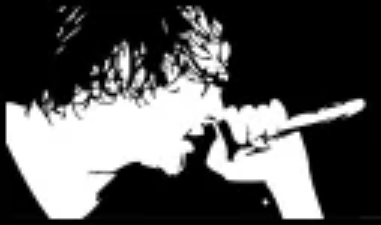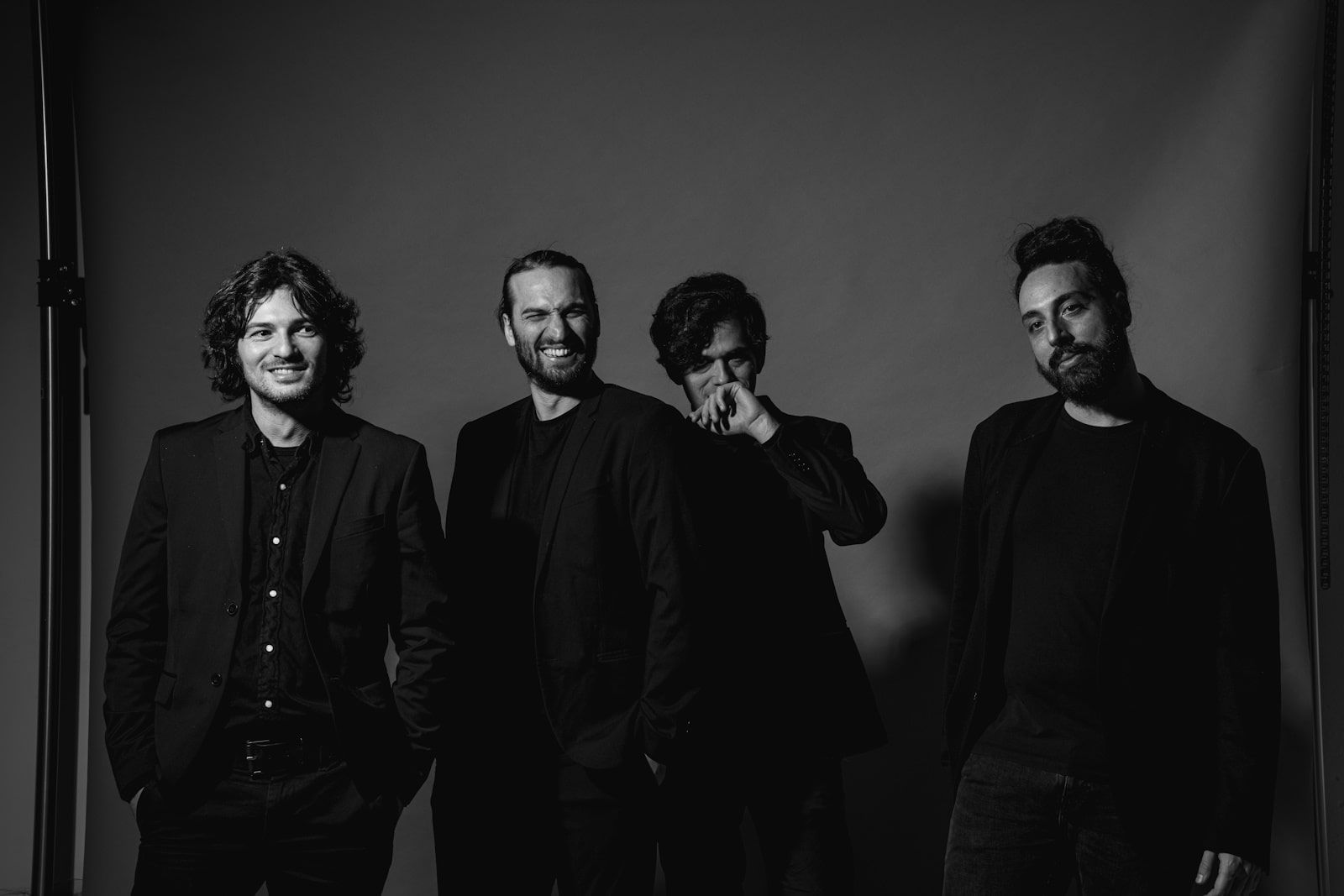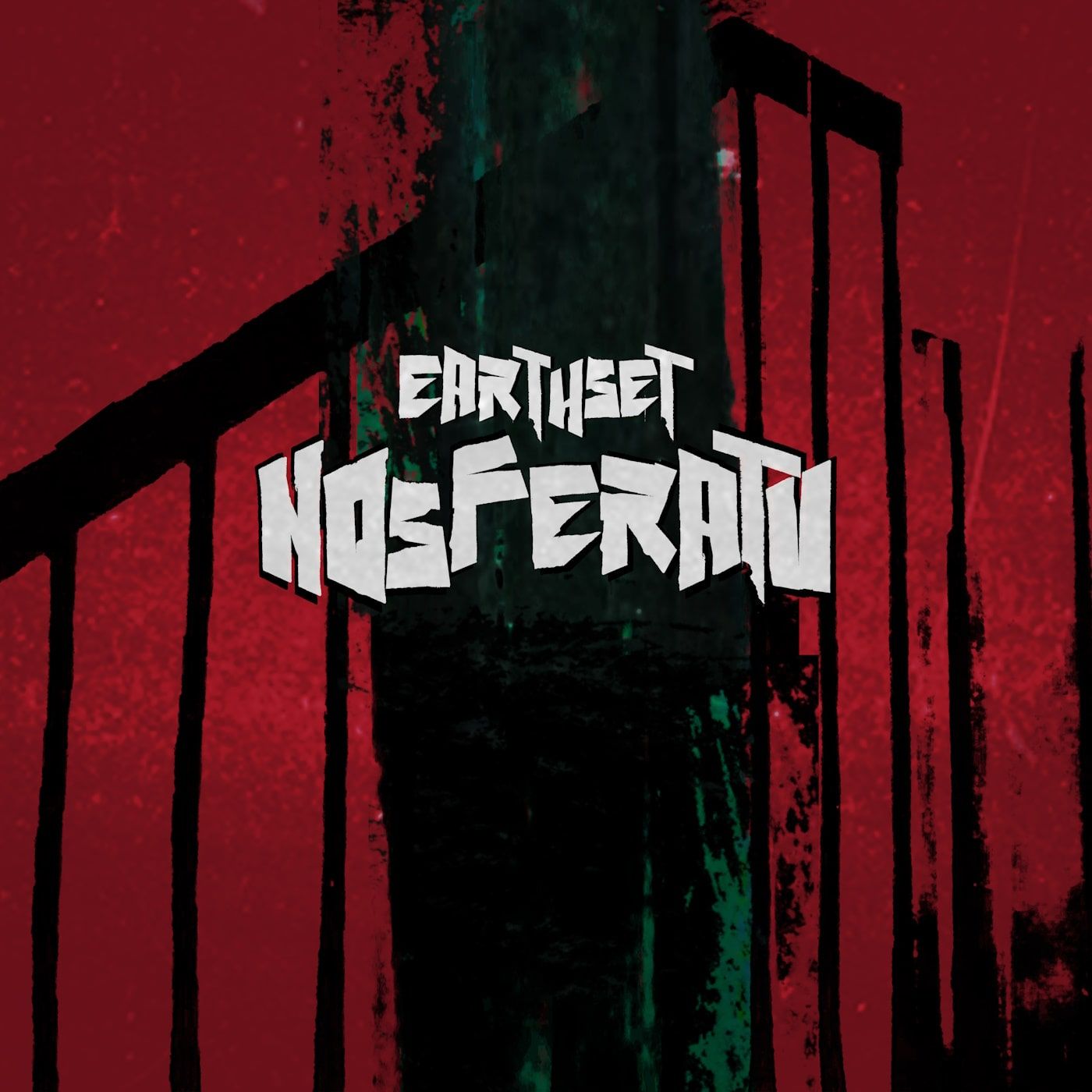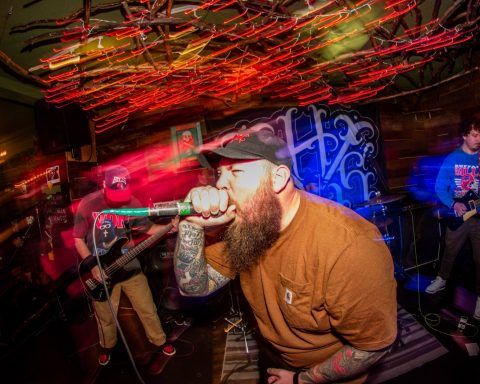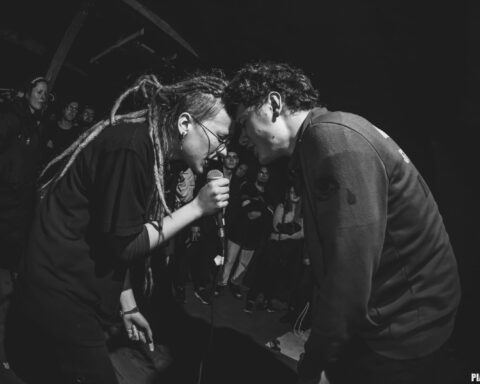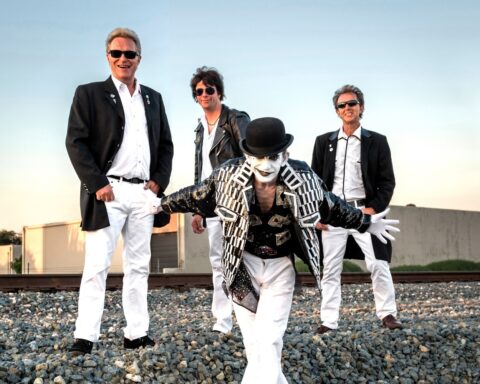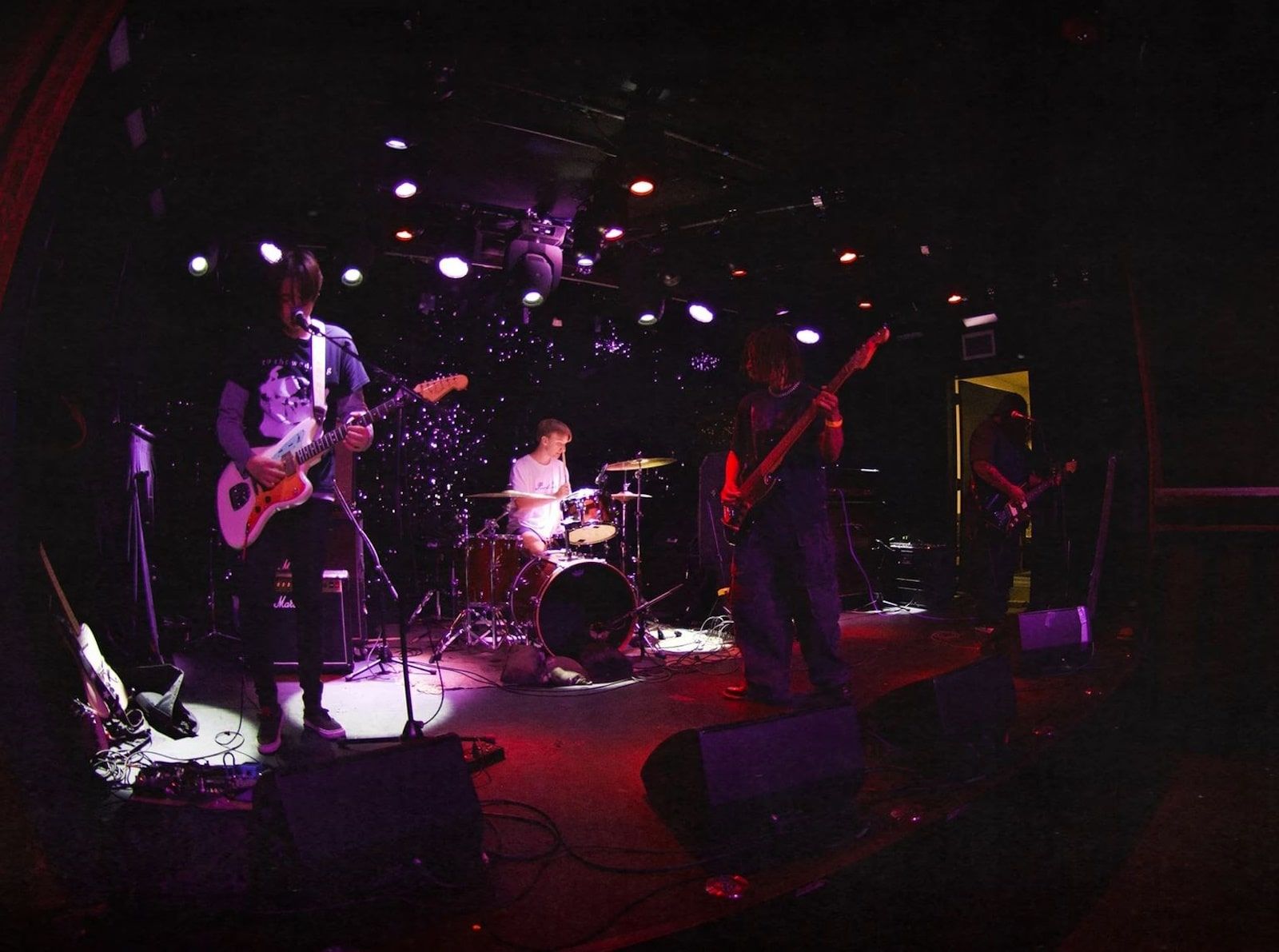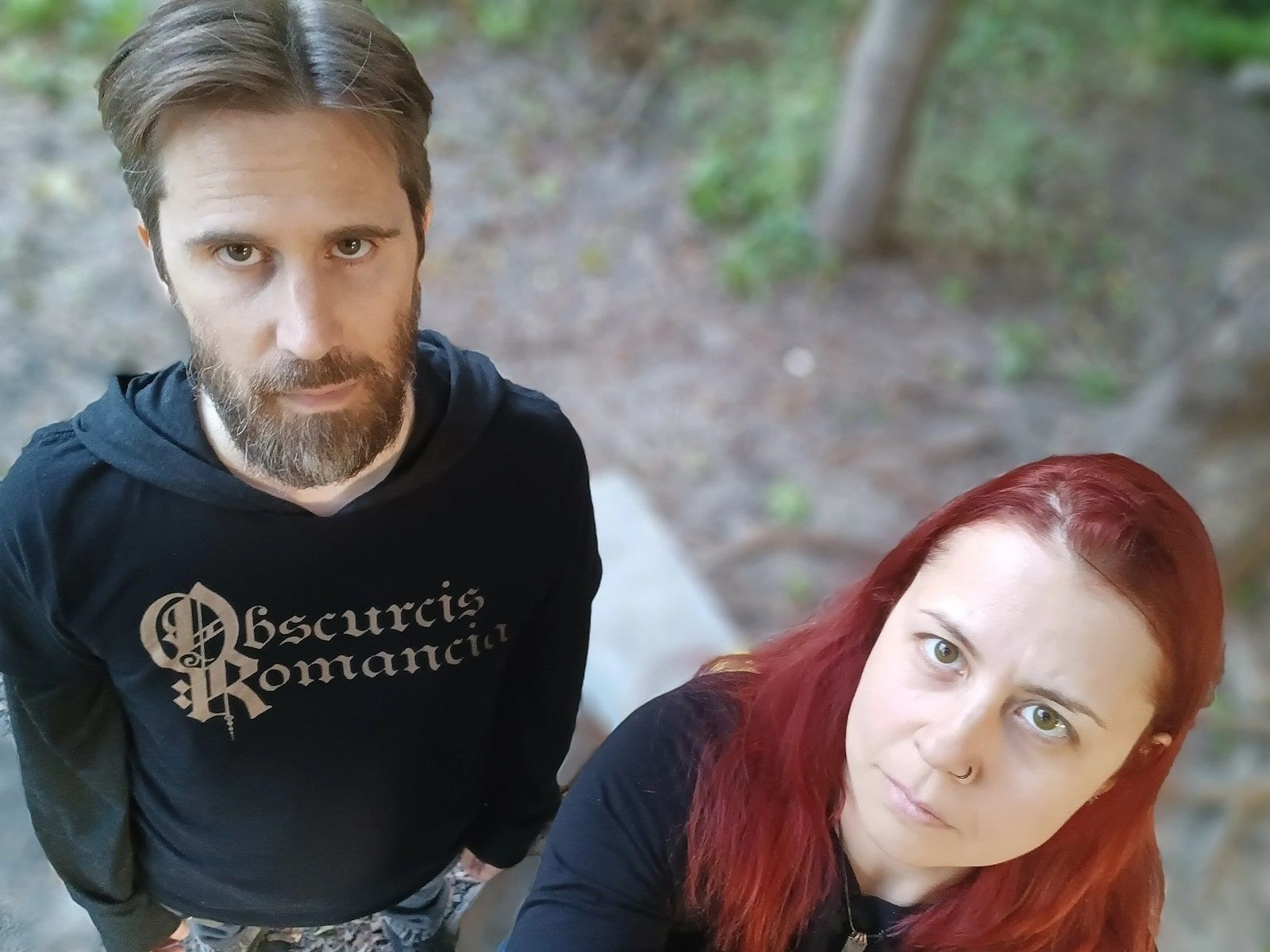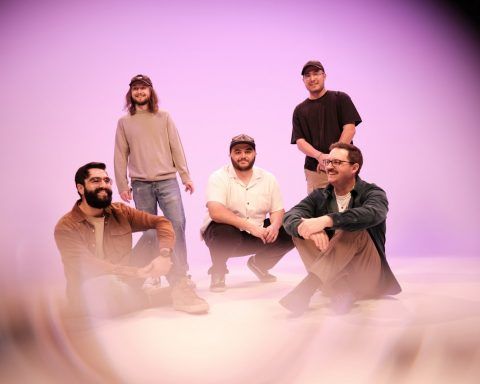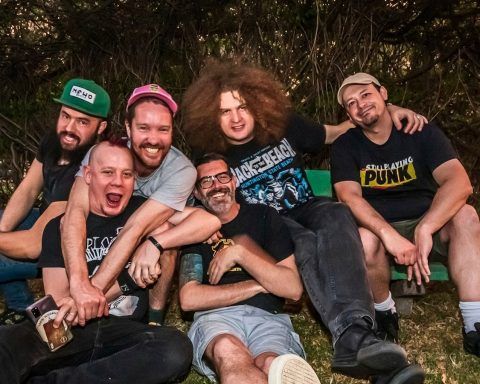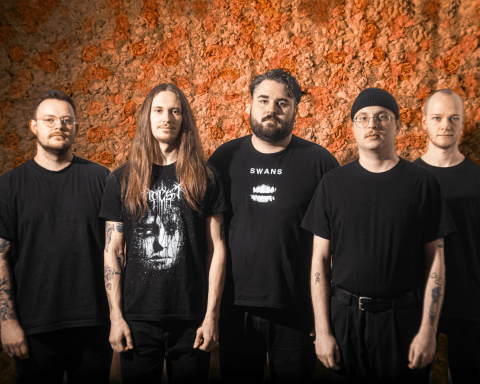In the shadowy realm of early cinema, where flickering images speak volumes in their haunting silence, music becomes the soulful interpreter of unspoken dread and silent screams. It is here that Earthset, the Bologna-based rock ensemble, weaves their latest auditory narrative, a musical score for the iconic 1922 silent film, “Nosferatu, eine Symphonie des Grauens.” Released just a spectral breath away from Halloween, on October 27, the album titled “Nosferatu” resurrects the eerie masterpiece of German Expressionist cinema directed by F.W. Murnau with an audacious sonic palette that refuses to cower before the film’s storied legacy.
Forged in the crucible of their unique sound—sharp, acidic, and traversing the spectrum from heavy distortions to limpid clarity—Earthset’s project is not an insipid homage but a bold dialogue with history.
With Luigi on bass, Costantino wielding the guitar, Emanuele behind the drums, and Ezio lending vocals and guitar, the band’s commitment to a “continuous state of alteration, evolution, and dynamism” finds an apt partner in Murnau’s masterpiece. Following their 2015 debut and successive ventures, “Nosferatu” is the continuation of a thematic exploration, a musical kinship with early cinema that began with “L’Uomo Meccanico.”
The album, distilled from a live score originally performed for the Soundscreen Film Festival 2020, is an adaptation in itself, pared down for an auditory experience that promises to transcend the visual medium while remaining faithful to its thematic core. The delay brought on by the pandemic has only intensified the band’s resolve to craft an album that complements the film’s visuals, allowing them to breathe and, at times, allowing the music to take the lead in this dark waltz of shadows and sound.
Earthset’s interaction with “Nosferatu” extends beyond mere accompaniment. They acknowledge the dense thematic fabric woven around the film—its storied history of unauthorized adaptation, legal skirmishes, and a near-miraculous survival from destruction. These elements lurk in the background, like specters beyond the reach of the candlelight, as the band delves into the artistic endeavor with a traditionalist yet innovative approach to score composition.
Their latest offering confronts the non-linear storytelling of the silent era, matching it with a musical structure that emulates this timeless quality. This approach is as much an embrace of the film’s narrative quirks as it is a nod to the challenges and triumphs of composing for a work that spans longer than their previous projects, demanding endurance and innovation in equal measure.
“Nosferatu” emerges as a testament to Earthset’s versatility, marked by a score that is meant to be appreciated with or without its visual counterpart.
They navigated the transition from a planned tour with a cinematic concert to a recorded album with a clear vision—to create music that holds its own as a standalone experience.
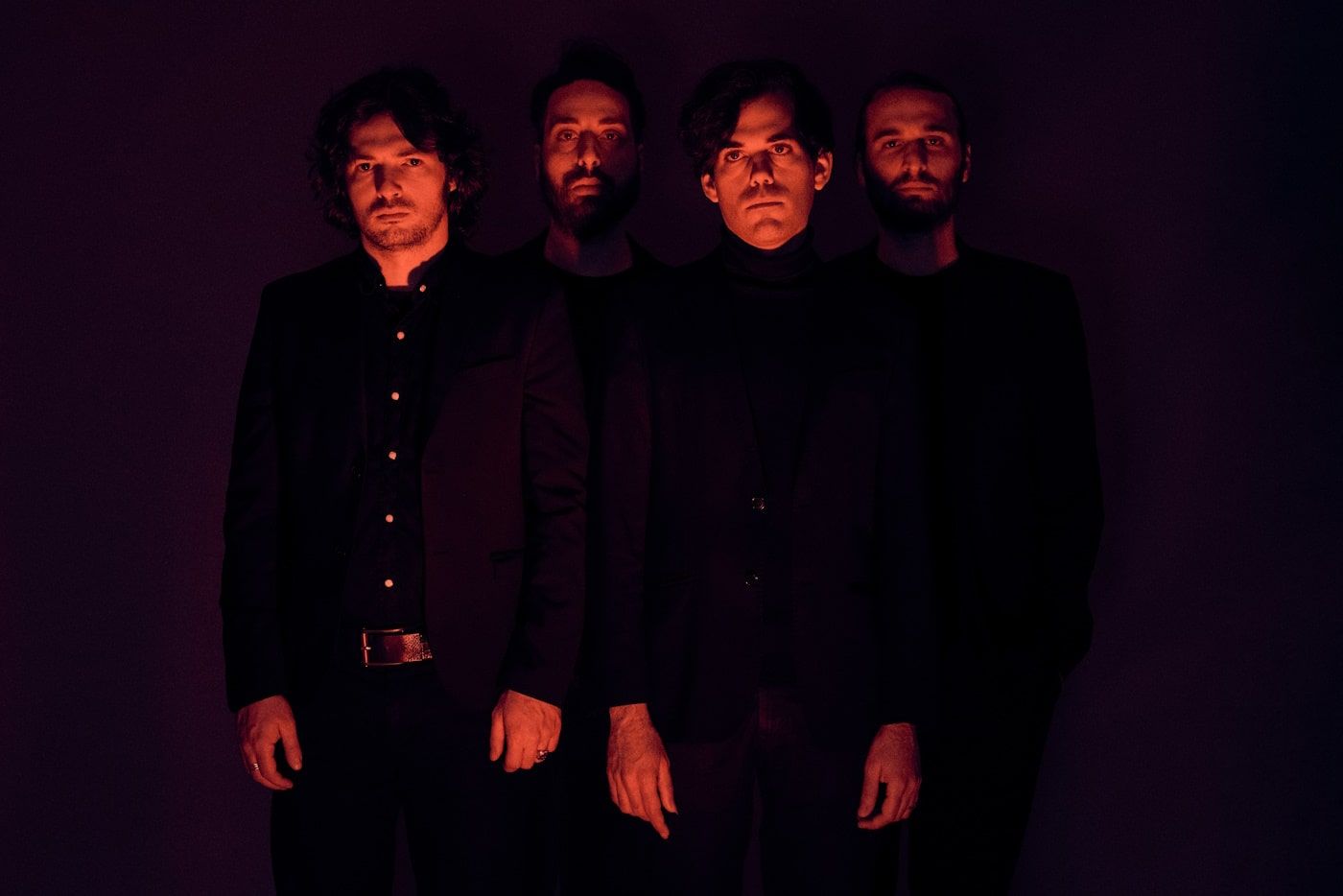
Ezio’s dual role as a musician and the creator of the album’s artwork exemplifies their DIY ethos and the symbiotic relationship between the auditory and the visual within their craft. The Italian underground-hardcore scene of their native Bologna has left its mark on the heavier aspects of the score, providing a visceral counterpoint to the German Expressionist roots of the film.
With the release of “Nosferatu,” Earthset stands at a crossroads of past and future. The tour looms on the horizon, while the possibilities beyond it remain shrouded in mystery. Their experimental spirit suggests a readiness to traverse uncharted territories, whether they continue to dance with the ghosts of early cinema or seek out new artistic haunts.
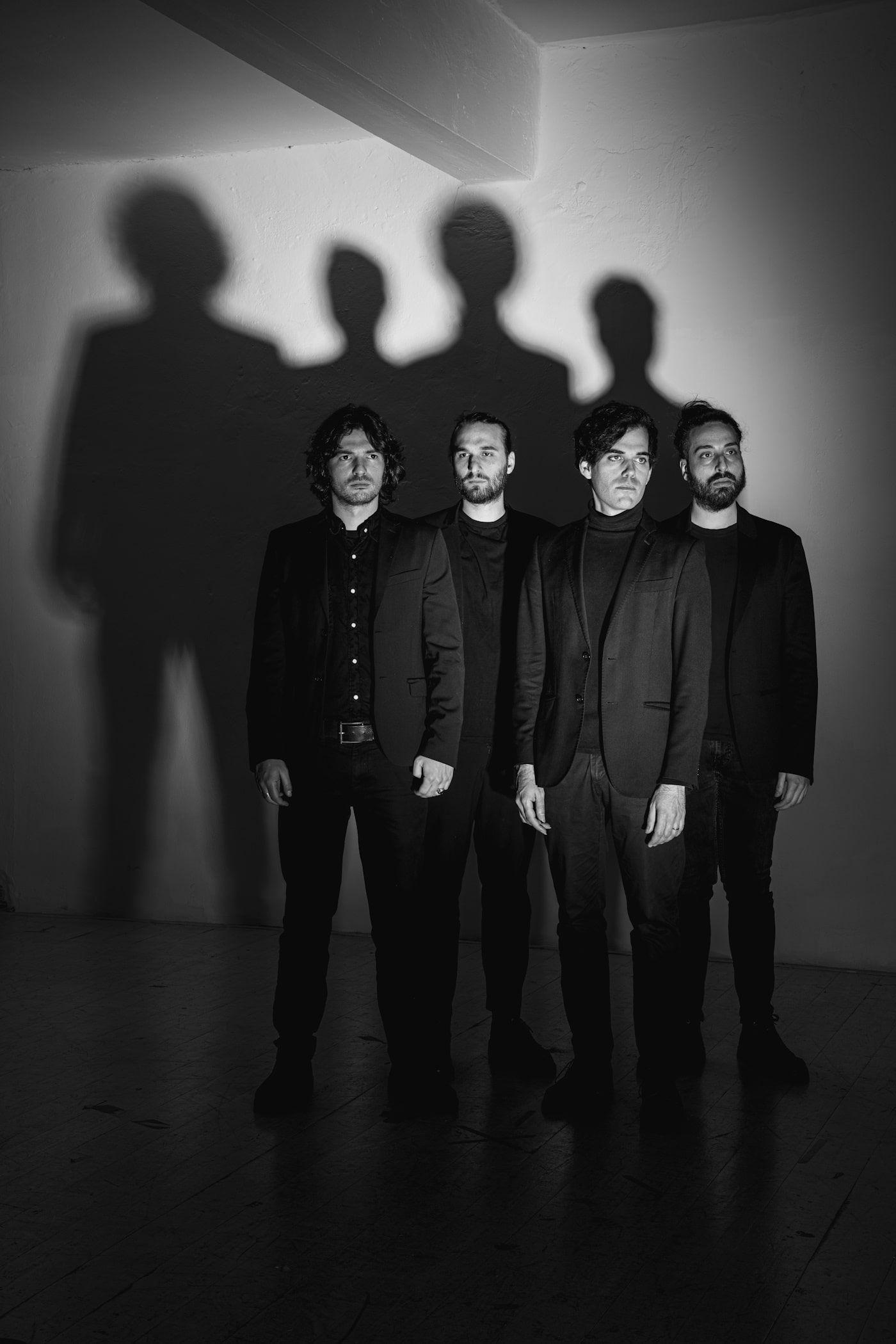
In technical terms, “Nosferatu” is a manifestation of Earthset’s sound—live, raw, and unapologetically modern, unconcerned with mimicking the sonic textures of the 1920s. The mixing and mastering, handled with a deft touch, ensure clarity and impact, favoring emotion over historical mimicry. After experiencing their score alongside “Nosferatu,” the band aspires to leave audiences surprised and curious, disrupting expectations and inviting a new appreciation for a film nearly a century old.
In the echoes of Earthset’s compositions, the silent screams of “Nosferatu” find a voice, reminding us that music, like cinema, is a vessel for the timeless and the spectral, carrying us into the depths of imagination where horrors and wonders await in equal measure.
Here’s our full interview with the band.
In composing a musical score for “Nosferatu,” you’re interacting with a film that’s been analyzed for its influences on cinema and horror for almost a century. How did you approach the heavy thematic layers, including unauthorized adaptation and copyright challenges that surround the movie?
Well, we’re aware of the many layers that surround the movie, but we approached the musical composition of the score in the most traditional way, by focusing on the relationship between music and image. Therefore, we tried to remove all the knowledge we had, to be as blank as we could be and let ourselves be guided by the atmospheres of the film.
Your work is described as having a “non-linear structural composition.” How does this aesthetic choice engage with a film from the 1920s, especially one from the German Expressionist movement?
To be honest, we don’t know if it matches with the idea of the expressionist movement, but it surely fit with silent movies. These early ages masterpieces had to be restored and edited in a way that probably is still far from the original cut, so there are many scenes that may appear not very linear with the story. For example, in Nosferatu there are some scenes in which a group of scientists observes small animals and plants that have some of the vampire characteristics; or other scenes of people traveling that are collocated in a certain part of the movie yet seem to interrupt the continuum of the story.
So somehow our music and nonlinear composition fits. Or, at least, we hope it does.
Having previously translated early ’20s movies into music, what unique challenges or revelations did “Nosferatu” offer you in contrast to other projects like “L’Uomo Meccanico”?
First of all, the movie is quite longer than “L’Uomo Meccanico”, so the real challenge was to write much more music and to play with no pauses for over an hour and a half. It is physically and mentally a marathon.
Second, “Nosferatu” is a masterpiece so we needed to find some themes and music that might be iconic without being abused.
The project was initially slated for the SOUNDSCREEN FILM FESTIVAL 2020, and then COVID intervened. How did this delay affect the final composition of the album, if at all?
We were lucky enough to perform the live score with the movie at SOUNDSCREEN 2020, but then in Italy we faced a new lockdown that forced us to wait until the end (?) of COVID.
Given that “Nosferatu” is a silent film, your music carries significant weight in shaping the audience’s emotional and intellectual engagement. How did you balance between accentuating and not overpowering the visuals?
We didn’t. We just did what felt right to us but the idea ultimately was to create music that would somehow work without the film as well. The show is a concert and if at times the music overpowers the visuals we think it’s not necessarily a bad thing.
Anyway over an hour and a half there are long moments where the music is more airy and that’s intended to let the film breathe.
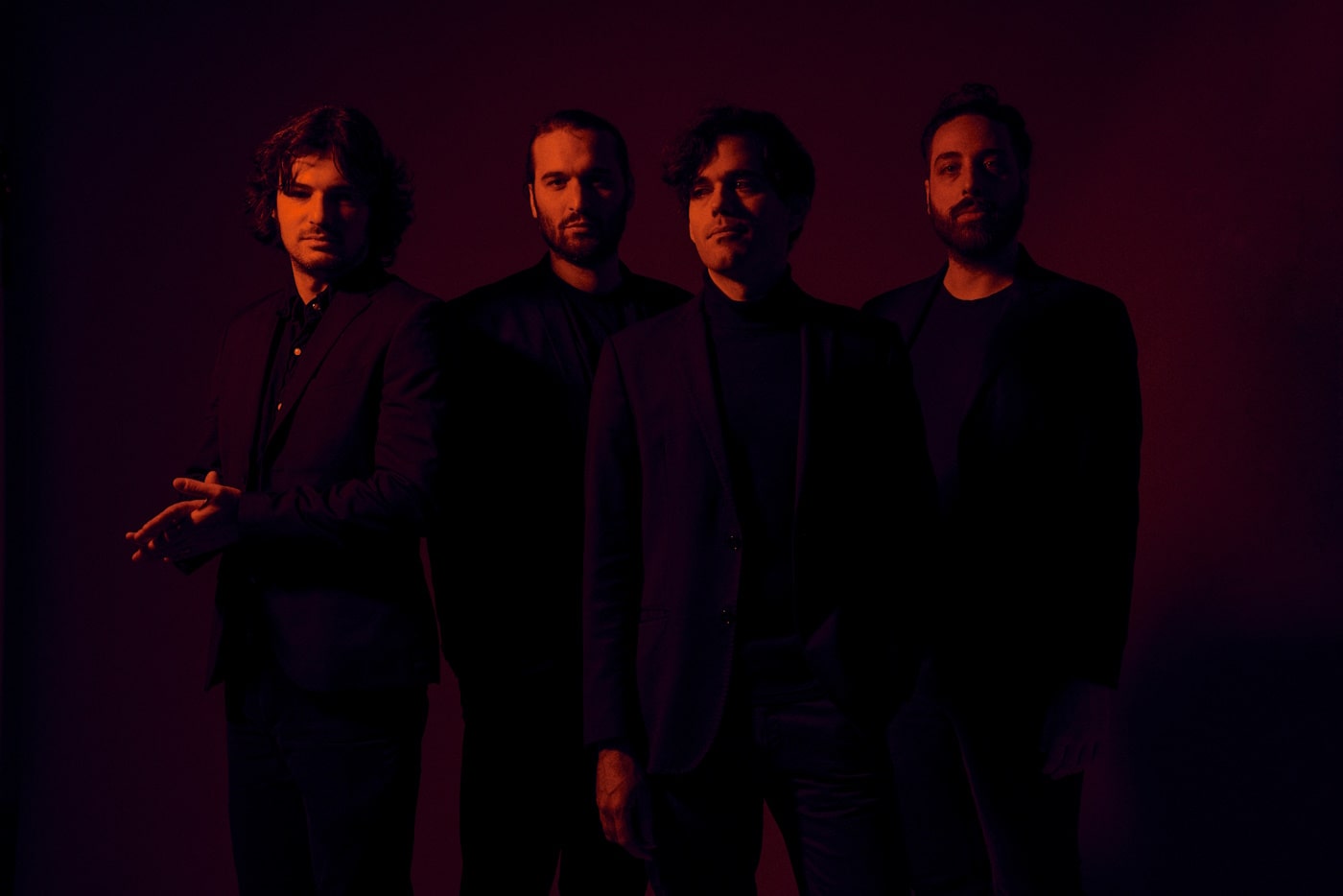
Given that the movie itself was an unauthorized adaptation that led to a lawsuit, were there any legal considerations you had to keep in mind while working on this musical score?
Not really, the movie is of public domain in most countries around the world.
Originally planned as a tour with a cinematic concert, the project has adapted into an album. Can you discuss how the transmutation from live performance to recorded album affected your approach to the score?
Again, the music we make for these types of shows is meant to be enjoyable also without the film, that is the objective. So it makes sense to record it a make it available for whoever wants to listen. In the first film soundtrack shows we did we hadn’t recorded anything yet and after the concert people would often ask us where they could listen to the music.
The recording of Nosferatu is a bit shorter that the version we play with the film as we felt some parts would benefit from being shortened in the album.
Your band works closely in the realms of visual art as well, with Ezio Romano handling the artwork. How do these different art forms feed into each other within the ecosystem of Earthset?
You know, we are a d.i.y. band; Ezio already worked on some other covers or artworks for our previous albums, and he has always been involved in the process of the artistic landscapes around “Earthset”.
He is not a visual artist, this is something he likes to do as a hobby…sometimes his works are not that bad, sometimes they are pretty good. In this case, we found that the artwork he realized was cool, so we decided to use that.
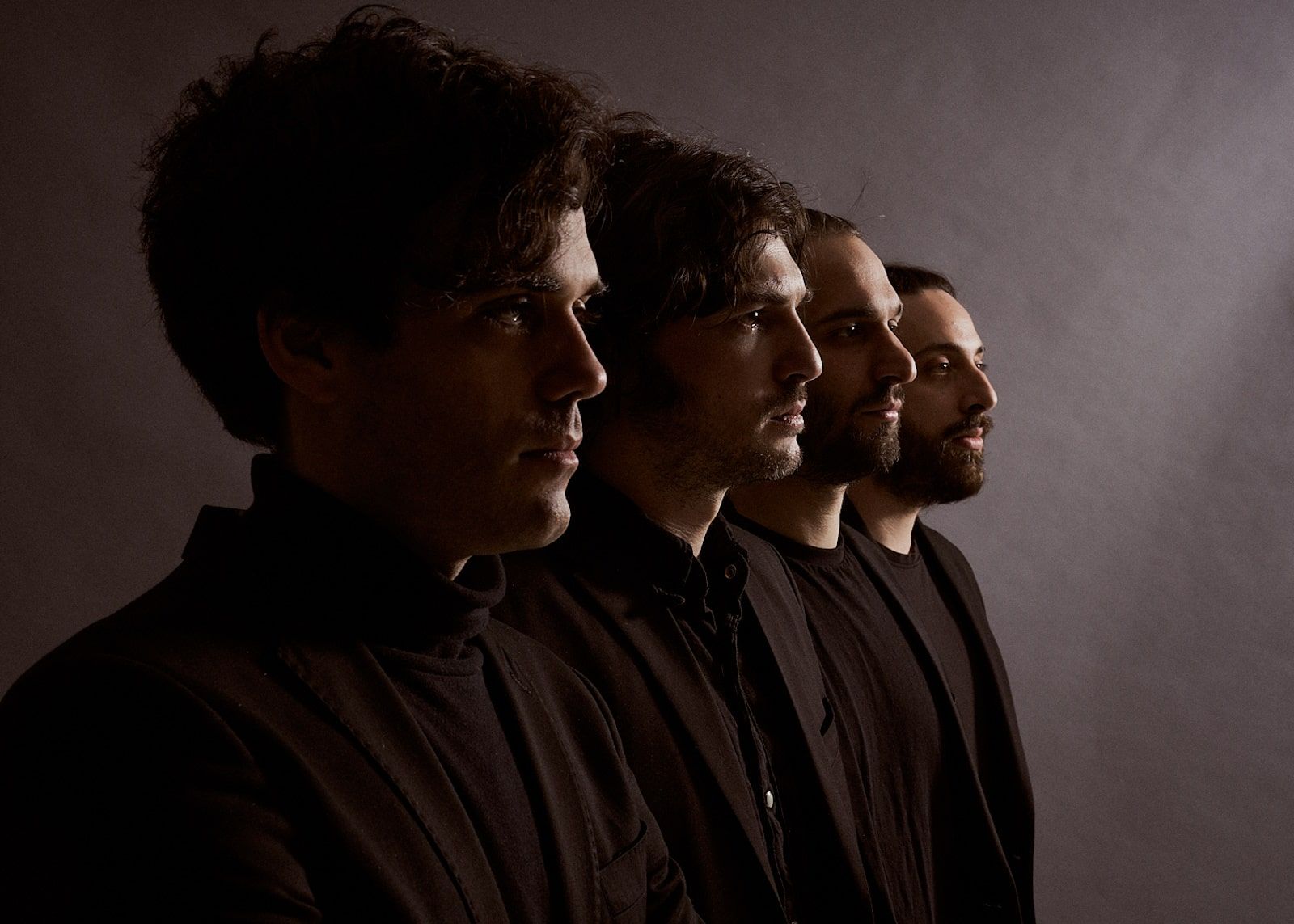
As a band hailing from Bologna, Italy, can you talk about how the Italian musical or cultural scene has influenced this project rooted in German Expressionist cinema?
The Italian scene that had the main impact on us for this record and cinematic concert is the underground-hardcore scene around our city, Bologna. Bands such as Cani dei Portici, Lleroy, Leinoinnocence and others that we enjoy seeing live, were a huge influence for the sounds of guitars and the heavier attitude of the musical score.
Besides that, the Italian rock scene is quite sclerotic and doesn’t have much to offer…
Now that “Nosferatu” is nearing its release, what’s next for Earthset? Will you continue to explore early cinema or are there other horizons you’re keen to venture into?
We still don’t know. Right now we’re focused on the tour for Nosferatu (thanks Tocka for the support!).
Could you delve into the technical aspects of the album? How were decisions made in the mixing and mastering process to preserve or perhaps modernize the ’20s atmosphere?
We work on our sound in our rehearsal room, once it gets to mixing and mastering it’s generally just a matter of balancing volumes and frequencies so that everything cuts through the mix properly. It was all recorded live, all four of us together in one room, that definitely had an impact on the sound and general feel of the recording.
If there’s one thing we don’t do is adapt our sound to the period of the film. All the sounds, instruments, effects etc we use are what we enjoy using and fit with the flow of the music we’re writing. It’s all modern enough already, at least compared to the 1920’s.
What do you want the audience to walk away with after experiencing your musical score alongside “Nosferatu”? Is there a particular message or emotion you’re aiming to evoke?
Generally people are surprised after our shows, they don’t expect a 1920’s film to fit well with the type of music we make and our sounds, but somehow it does. We’re happy for them to feel that way, if our audience is curious and surprised it’s more than enough.

